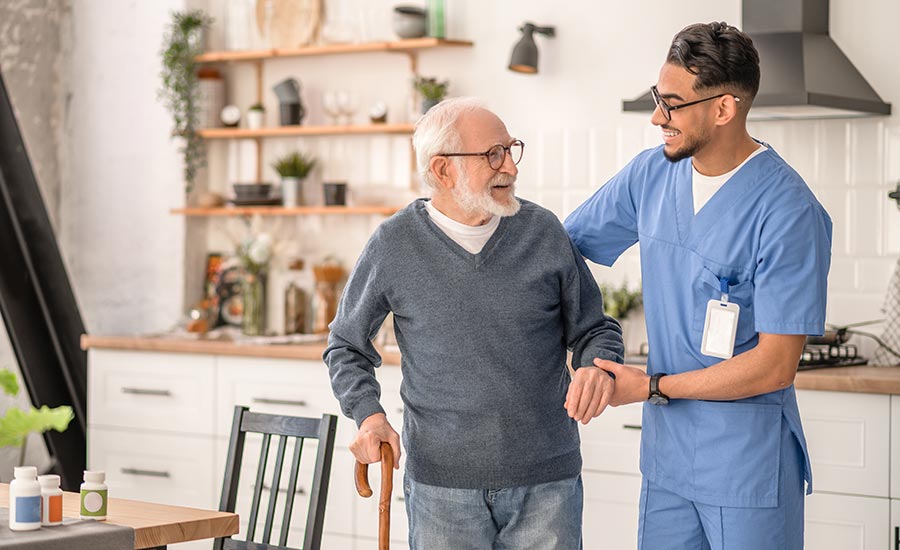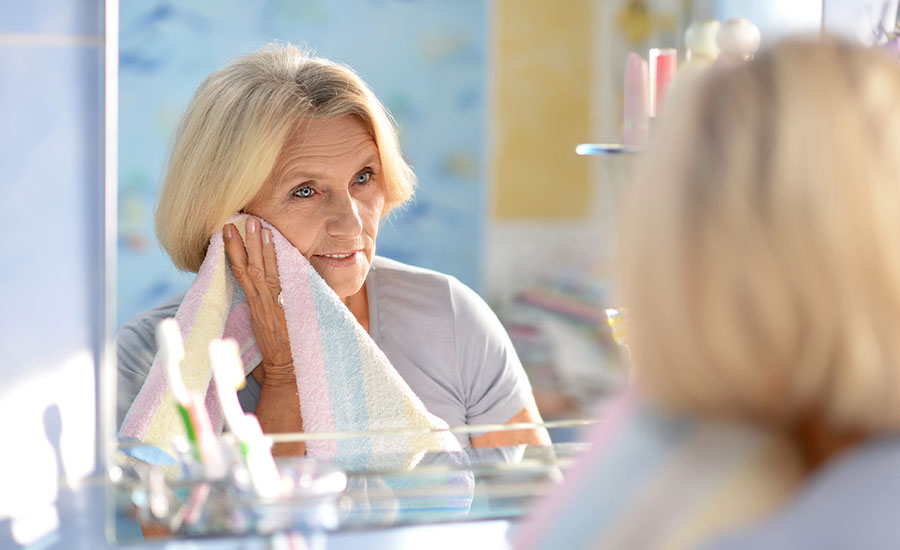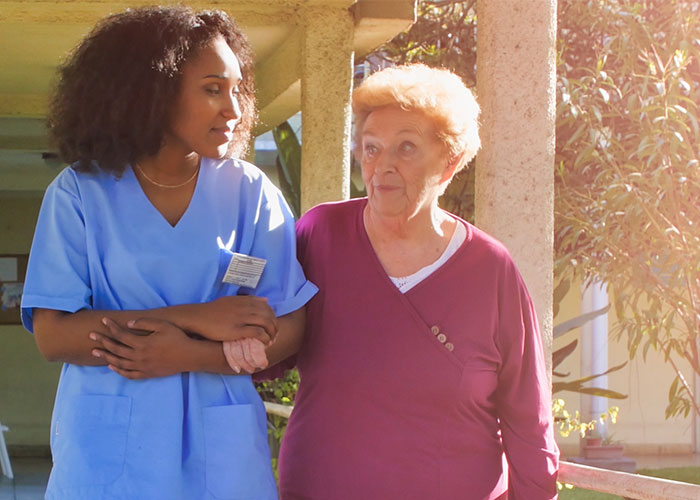Navigating Incontinence in the Elderly: Helping Your Loved One Maintain Their Quality of Life

As your loved one enters their golden years, they may encounter new health challenges — and one such challenge may be incontinence.
While incontinence in the elderly can be a delicate topic, at Always Best Care Senior Services we approach it with care, understanding, and compassion. With this approach, you can provide your senior loved one with the best care possible, while maintaining their independence, dignity, and quality of life.
We’ll define the different types of incontinence in the elderly, explain how the condition can be treated, and share our top tips for managing incontinence.
We’ll also detail our senior care services at Always Best Care, and explain how our team can help you care for your loved one and improve their quality of life.
Table of Contents
What is Elderly Incontinence?
Elderly incontinence is a common condition experienced by seniors — usually over the age of 65 — in which bladder or bowel control is lost.
Elderly incontinence is categorized into two main types: urinary incontinence and fecal incontinence.
Urinary incontinence is the involuntary leakage of urine, while fecal incontinence is the involuntary passing of stool.
For some, incontinence may be a minor inconvenience, while for others, it can significantly impact their overall quality of life.
6 Types of Incontinence in the Elderly
There are six main types of incontinence in the elderly, each with distinct causes and characteristics:
1. Urge Incontinence
Urge incontinence is the sudden urge to urinate. This type of incontinence is caused by overactive bladder muscles, nerve damage or a urinary tract infection — the latter being a temporary condition.
In addition, it is often experienced by those who are diagnosed with diabetes, multiple sclerosis, Parkinson’s or Alzheimer’s disease.
2. Total Incontinence
Total incontinence is a complete loss of bladder control caused by neurological or functional conditions, leading to the continuous leakage of urine.
Neurological conditions that can cause incontinence include spinal cord injuries or multiple sclerosis, while functional conditions include a neurogenic bladder or urethral sphincters — ring-like muscles that control the flow of urine — that are no longer working.
3. Stress Incontinence
Stress incontinence is involuntarily urinating while coughing, sneezing, laughing, or lifting heavy objects.
This type of incontinence is caused by weak pelvic floor muscles. It is more common in elderly women after pregnancy and childbirth, and men who experienced prostate surgery.
4. Overflow Incontinence
Overflow incontinence is characterized by difficulty emptying the bladder, causing small drops of urine to leak out involuntarily.
This type of incontinence is caused by weakened bladder muscles, diabetes, nerve damage, or a urinary tract obstruction (bladder stones, for example).
5. Functional Incontinence
Functional incontinence is the involuntary leakage of urine due to physical or cognitive impairments that prevent an elderly person from reaching the bathroom in time.
This type of incontinence is caused by mobility issues such as arthritis or cognitive conditions such as dementia.
6. Mixed Incontinence
Mixed incontinence is the combination of more than one type of incontinence. For example, urge and stress incontinence are common in women, while functional and urge incontinence are common in men.
Mixed incontinence is caused by urinary system changes due to aging, such as urinary retention — the inability to completely empty the bladder.
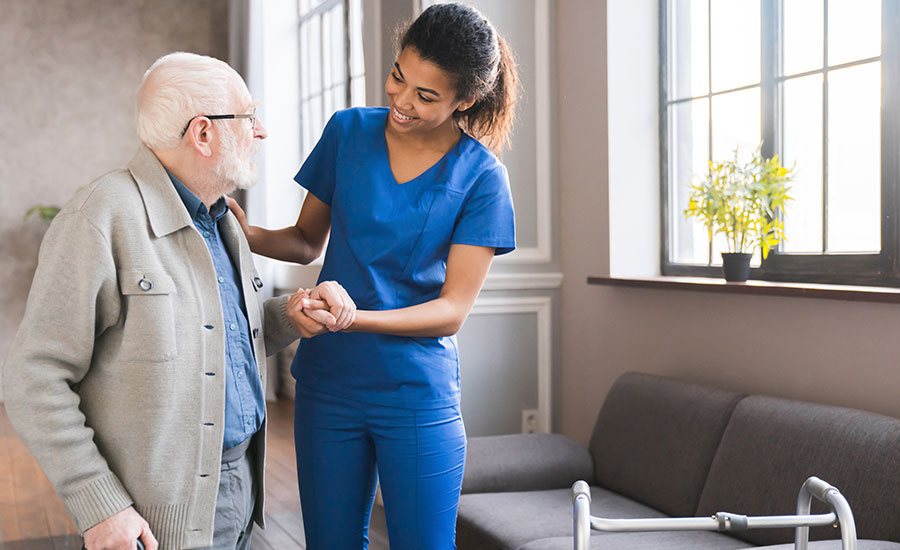
Why Do the Elderly Lose Bowel Control?
Bowel or fecal incontinence can occur due to several factors, including:
- Muscle weakening: With age, the anal and pelvic floor muscles weaken, which can lead to the reduced ability to control bowel movements.
- Nerve damage: Damaged nerves in the rectum and pelvic floor muscles can weaken the muscles responsible for controlling bowel movements or impair the sensation of a bowel movement.
- Constipation: Chronic constipation can cause fecal impaction — a condition characterized by the appearance of a large, hard mass of stool that gets stuck in the rectum or lower part of the large intestine.
- Diarrhea: Loose, watery stools can be more difficult to control, increasing the risk of incontinence.
- Reduced mobility: With age, mobility weakens, which can lead to the accidental passage of stool.
- Cognitive decline: Dementia, Alzheimer’s disease, and other cognitive disorders can reduce the ability to recognize the need to pass stool or to navigate to the bathroom on time.
- Medications: Some medications, including laxatives, antidepressants, and blood pressure medicine, can cause or aggravate fecal incontinence.
- Surgery or trauma: Surgical procedures, injury, or trauma involving the rectum, anus, or pelvic floor muscles, can lead to a loss of bowel control.
If your loved one is suffering from incontinence, schedule a consultation with a healthcare provider to identify the cause and create a plan to provide them with the best care possible.
How is Incontinence in the Elderly Treated?
Treatment for incontinence in the elderly depends on the type of incontinence and the severity of symptoms. While surgery may be needed for some, there are also conservative treatment approaches, including:
1. Incontinence Products
For many seniors, incontinence products, such as pads, adult diapers, or waterproof mattress protectors, are a conservative option that can be effective in managing symptoms.
2. Medicine
Depending on the type of incontinence, medicine may be prescribed to help relax the bladder, reducing urgency to urinate or pass stool.
For example, duloxetine is a medication that can strengthen the muscle in the urethra, providing more control over the bladder or increasing bowel control.
3. Bladder Training
Bladder training is a type of behavior therapy that can improve control over the bladder by teaching patients to hold urine for longer periods and reduce the frequency of bathroom trips.
This training begins with a bathroom trip once every hour, then eventually increasing the time by 15 or 30 minutes, for example, to reduce frequency.
4. Biofeedback
Biofeedback is a type of therapy where muscle activity is monitored by small sensors that are placed on the skin near the pelvic floor muscles, or, in some cases, inserted into the rectum or vagina.
Biofeedback can be used with pelvic floor muscle exercises (such as Kegel exercises) to help strengthen the pelvic floor muscles and improve bladder control.
5. Electrical Stimulation
Electrical stimulation is a treatment that works by sending a mild electric current down the nerves in the lower back or pelvic muscles.
These harmless pulses help strengthen the muscles, improving the ability to hold in urine or bowel movements.
At Always Best Care, we know that each patient’s situation is unique. We work closely with you and your loved one to develop a tailored treatment plan that offers them a better quality of life through the best care possible.
Tips for Caring for Someone With Incontinence
Caring for someone with incontinence can be challenging, but with understanding and patience, you can help your loved one maintain their independence and quality of life.
When caring for someone with incontinence:
- Have an honest and open conversation about the issue with your loved one. Reassure them that incontinence is a common problem and they are not alone. Talk about their feelings and concerns to build trust and understanding.
- Create a bathroom schedule to help prevent incontinence. Gently remind your loved one to use the bathroom and encourage them to do so even if they don’t feel the urge.
- Make sure your loved one drinks six to eight glasses of water a day, but limit fluid intake after 6 p.m. to minimize incontinence before bedtime. (Check out our guide on the importance of staying hydrated for seniors for more details.)
- Keep track of how much fluid your loved one drinks and record it in a bladder diary. A bladder diary should include details such as the time of fluid intake, amount of fluid intake, and how many times your loved one went to the bathroom or leaked. Show this diary to your loved one’s healthcare provider to help inform their treatment plan.
- Prepare pads, adult diapers, and waterproof mattress protectors to help manage incontinence when it occurs. Be sure to change out soiled items as soon as possible to help prevent skin irritation and infections.
- Make sure your loved one wears clothes that are easy to remove, such as pants with elastic waistbands or dresses with snaps, to help them reach the bathroom more quickly.
- Encourage your loved one to live a healthy lifestyle. This can include eating a balanced diet, losing excess weight to strengthen their pelvic muscle, performing daily pelvic floor muscle exercises, limiting caffeine and alcohol intake, and avoiding cigarettes, to help relieve incontinence symptoms.
- Prevent your loved one from lifting heavy objects, as it can strain the pelvic floor muscle.
- Consult a healthcare professional for guidance on managing incontinence, including possible treatments or interventions, such as exercises, medications, or the need for surgery.
- Encourage your loved one to participate in daily activities and maintain their social connections, to help them boost their self-esteem and overall quality of life. (Read our guide on preventing social isolation that comes with aging for more info.)
- Be empathetic and understanding, acknowledging the emotional toll that incontinence can take on your loved one’s self-esteem and mental wellbeing.
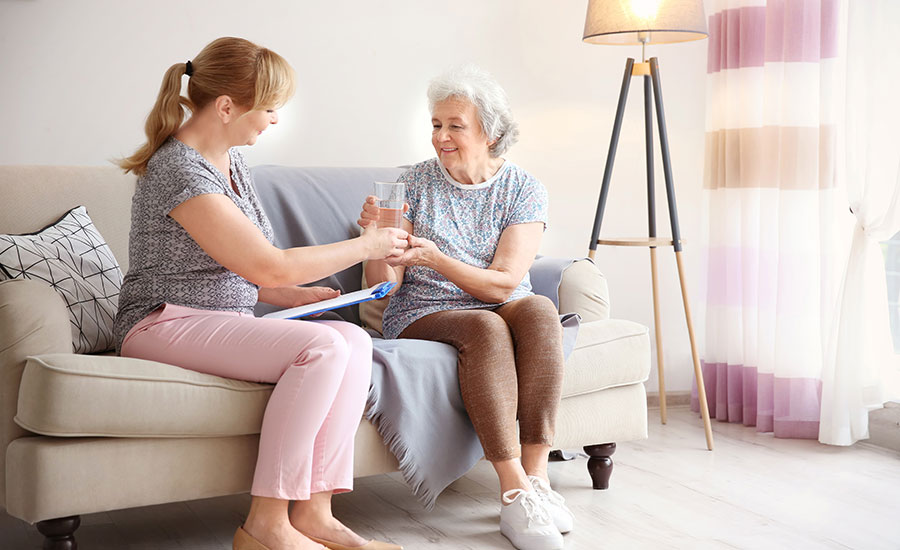
How Always Best Care Can Help You Care for a Loved One With Elderly Incontinence
At Always Best Care Senior Services, we are committed to providing unparalleled health care services for the elderly, from in-home care services to respite care and beyond.
For over 25 years, our devoted team has consistently delivered trustworthy and empathetic senior care throughout the United States and Canada.
Our extensive network spans more than 225 locations, enabling us to serve our valued clients with unwavering dedication and support.
We offer:
- In-home care services, such as light housekeeping, bathing, grooming and dressing, incontinence and toileting services, a bowel program, nutritional education and support
- Specialized home care services, such as building a personalized care plan that is tailored to your loved one’s needs and type of incontinence
- Respite care services, so you can take a much-needed break from caregiving duties


